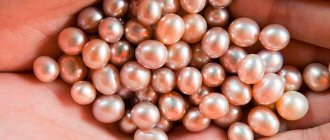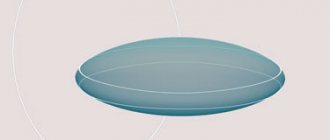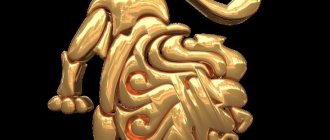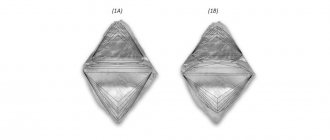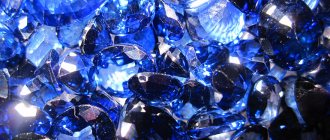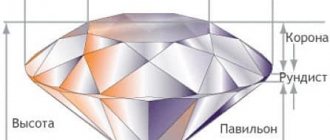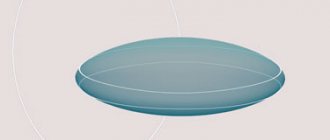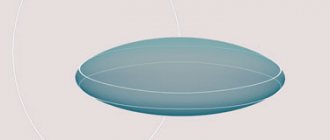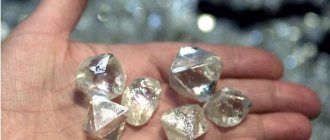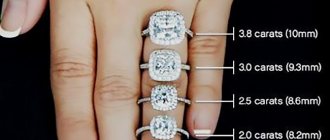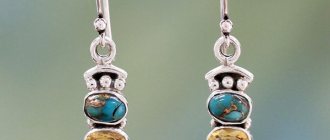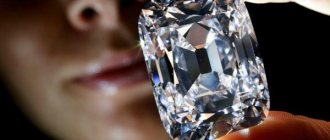The family-owned Asscher company has been synonymous with the world's finest diamonds since 1854. The history of the unique cut began in 1902, when Joseph Asscher perfected the geometric lines and cut of the square-shaped diamond. He patented it as the original Asscher cut, and it became extremely popular in the 1920s and 1930s during the Art Deco aesthetic.
Today Amsterdam is run by the sixth generation, Mike Usher and his sister Lita. Mike is responsible for design, production and finance, as well as new business development in Southeast Asia, while Lita is responsible for the North American and European markets, e-commerce platform and marketing. In the article you will read Mike's story about the cut that helped his name become part of the history of diamonds.
Joseph Asher is cutting the legendary Cullinnan Diamond
What is the Asscher cut?
The Asscher cut was developed in 1902. The original design had 58 stepped faces. It can be described as a square emerald cut diamond.
The original patent expired at the height of World War II, making it impossible to renew. Any cutter who produces a square step cut diamond can then describe it as a square emerald cut diamond or an Asscher cut diamond.
The original Asscher cut is no longer on the market except for vintage pieces from the early 1900s. However, most diamond dealers and manufacturers still refer to a square emerald cut diamond as an Asscher cut because it sells better.
Buy color G or aim higher?
Generally, if you want the best and have the money to buy a colorless stone, it is up to you to decide whether you want a diamond in the DEF range. However, if you don't mind saving money, the G stone will serve you just as well.
It should be kept in mind that the only time someone will be able to tell the difference between a G and a colorless diamond is when they are placed next to each other and compared.
Even then, you will have a very hard time telling the difference, and chances are no one will be able to tell what grade your stone is when you wear it.
If you are setting your diamond in a non-ferrous metal such as yellow gold, how colorless the stone is will matter even less because the reflection of the setting color will make the stone appear slightly colored.
In this case, don’t bother paying extra for colorlessness. In fact, you can safely choose colors even lower than G—I or J, for example, can be just as good for colored frames.
How is it different from other unusual forms?
The Asscher cut was the first unique patented diamond cut ever created and is the predecessor to the emerald cut we know today.
When you look at an Asscher cut diamond, it is like looking into the endless reflection of mirrors.
For the Asscher cut, the diamond manufacturer needs perfect square rough diamonds similar to those used to create cushion or princess shapes.
Diamonds with poor symmetry
| A round, oval-shaped diamond with a “butterfly” visual effect. This effect can often be found in fancy-cut diamonds in the shape of an oval and a drop (pear). | A 1 carat diamond with a diameter of 6.7 mm is stretched in diameter and has asymmetrical facets. An ideal cut diamond with this diameter should weigh 1.12 carats. |
| Height/Diameter,% | Area/Diameter,% | Diamond Cut Grading |
Move the sliders to visually see the impact of proportions on how a diamond interacts with light.
What are the most famous Asscher-cut jewels?
The world's most famous Asscher cut is the 33-carat Elizabeth Taylor Diamond. It was given to Taylor in 1968 by her husband Richard Burton, but is believed to have been cut before the 1920s. Taylor wore a ring with this diamond throughout her life. After her death, it was auctioned for $8.8 million. In 2011, the Gemological Institute of America classified it as a Type IIa Exceptional Fine Diamond with a VS1 clarity.
How did cutting evolve?
Almost 100 years after the original Asscher cut was first conceived, the design has been revised with 16 additional facets added to make it similar to the Cullinan II Diamond of Great Britain's Imperial State Crown.
The result is a 74-sided step-cut square diamond that absorbs light from every angle, creating an infinity pool effect and a kaleidoscope of all the colors that make up the light spectrum. It is created to catch the eye with its brilliance.
Diamond cut and types of cutting of jewelry stones
The mass of a cut diamond (brilliant) and precious stones is measured in carats (0.2 g). At the beginning of the 20th century, mathematician Marcel Tolkowsky calculated the proportions of a diamond cut (in the West this diamond is known as the Tolkowsky diamond, in Russia - the ideal “brilliant” cut), in which the light entering the stone through the crown is completely reflected from the edges of the pavilion according to the law of complete internal reflections and comes back out, creating strong brilliance and “game” (the traditional round diamond with 57 facets was taken as the original shape).
With such proportions, the diamond does not transmit light “through”, unlike imitations. The main indicators that influence the evaluation of diamonds are the color of the stone, the clarity of the stone, the cut of the stone and its weight expressed in carats.
Around 1600, the full brilliant cut diamond was developed in Paris and, with some modifications, has survived to this day. This cut creates optimal conditions for total internal reflection and dispersion of light in the diamond. At first, the simplest form of diamond cut was used, in which there were eight facets on the top and bottom of the diamond. Jewelers called this cut ordinary or simple. Now small diamonds are cut this way, producing diamonds weighing from 0.03 to 0.01 carats. Later, more complex shapes of diamonds were developed - 16 facets were made on both parts, or 32 facets in the upper parts and 24 in the lower parts. Such cuts were respectively called double and triple (full). Currently, diamonds are given the following shapes: marquise, oval, pear-shaped, briolette, angular, emerald, square, etc., as well as classic round shapes.
In a diamond cut, the upper part of the stone is called the crown or top, the lower part is called the bottom or pavilion, the flat part is called the table or platform, and the line separating the crown from the pavilion is the girdle. The edges of the pavilion converge at one point - a spike. Previously, instead of a tenon, they made a small platform - a culet.
Mathematician M. Tolkovsky calculated the following “ideal” shape of a diamond cut. The upper part of the diamond has a height of 0.144 times the diameter of the stone, the diameter of the platform is 0.53 times the diameter, and the angle of inclination of the main faces is 40.75o. The total height of the diamond is 0.6 diameters, and the height of the girdle is 0.01-0.02 diameters. However, in order to save raw materials, diamonds are almost never cut with this ideal mathematically calculated cut. The Tolkowsky round brilliant cut for 57 facets and numerical relationships are shown in the figure.
Most often in practice, the so-called practical diamond cut is used, which allows for the most rational use of rough diamonds. It is close to ideally calculated, but different from it. The size of the platform is 50-65% of the diameter, the height of the girdle is 2-5% of the diameter, the angle of inclination of the crown edges is 30-40o, the inclination angle of the pavilion edges is 38-42o.
The play of a diamond is influenced by the size and number of facets. Large stones are made with a large number of faces, small ones with fewer. As a rule, diamonds weighing less than 0.03 carats have 17 facets, stones weighing 0.03-0.05 carats have 33 facets (Swiss cut). However, most often diamonds weighing more than 0.03 carats have 57 facets: in the upper part - 33, in the lower part - 24.
Jewelry companies have developed new, more complex forms of cutting large diamonds, which significantly enhance their performance. Thus, for stones weighing more than 1 carat, the Highlight Cut cut into 73 facets (top 41, bottom 32) is proposed. For larger diamonds, a “royal” cut with 86 facets (49 at the top and 37 at the bottom) is used, as well as a “majestic” cut with 102 facets (61 at the top and 41 at the bottom). Sometimes a spiral cut is performed.
The shape of diamonds can be different, but most often it is round. For large crystals, the following shapes are used: marquise, pear-shaped, oval, baguette, emerald, etc. When cutting precious stones, the optimal angles of the pavilion edges are of decisive importance. If they are not optimal, then most of the rays will pass through the stone without being reflected from the lower edges, and the shine of the stone will be dull and the color will be pale. The more rays of light come out of the stone, the more it shines and sparkles. The refractive index of different colored stones is different. Each stone has its own critical angles of inclination of the bottom faces, which are determined by the ratio
n = sin i / sin r (1)
where i is the angle of incidence of the light ray on the surface of the stone; r is the angle of refraction of a ray of light in a stone.
When a ray of light hits the air from a stone, the angles of incidence and refraction can change places: the angle of incidence r1 becomes smaller, the angle of refraction i1 becomes larger. As a result, the formula will take the form
sin r1 / sin i1 = 1/n (2)
In this case, as the angle r1 increases, the direction of the ray emerging from the crystal approaches (with an increase in i1) the direction of the stone surface and, at a certain value, completely merges with it. In this case, angle i will be equal to 90o, a sin i = 1. Then formula (2) can be written as follows:
sin r1 = sin Q = 1/n (3)
From this moment, with a further increase in the angle r, the light ray will not be able to exit the stone and will be reflected from its surface. The angle Q is called the angle of total internal reflection or critical angle. Of the colored jewelry stones, the smallest critical angle is for diamond (24o5′), and the largest for quartz - 40o3′. The smaller the value of angle Q, the larger the range of angles at which the phenomenon of total internal reflection of light occurs inside the stone. For diamond this angular range is between 24o8′ and 90o-65o2′, but for quartz this angular range is only 49o7′.
A ray of light is completely reflected from the edges of the bottom if it falls at an angle no less than the critical one for a given stone - this is the lower limit of the angle of inclination of the edges of the pavilion. The upper limit of the angle of inclination of the pavilion faces is determined by the difference between 180o and the critical angle divided by three.
Table of refractive indices, critical angles, limits of inclination angles of the faces of the pavilion of jewelry stones
When cutting, jewelry stones are given different shapes.
Historically, certain forms of cutting jewelry stones have developed. The round brilliant cut is most often used when processing diamond, rock crystal, zircon, tourmaline, topaz, and less commonly emerald and ruby. Garnets, flattened diamonds and some dark, slightly translucent stones are cut with a single or double rose. Step cuts in the shape of a square, rectangle or diamond are used when processing transparent colored stones: beryl, emerald, hyacinth, sapphire, ruby and garnet. The photo below shows the most popular types of facet cutting.
Diamonds are divided by shape into round (17, 33 or 57 facets), marquise (55 facets), pear-shaped (56 facets), emerald (57 facets), trapezoidal baguette and rectangular baguette (25 facets) , oval (57 faces), angular (57 faces), square (25 faces), triangular (19, 31 and 37 faces), hexagonal (37 faces), octagonal (49 faces). By weight, diamonds are divided into three groups: small (up to 0.29 carats inclusive), medium (from 0.3 to 0.99 carats) and large (more than 1 carat).
Faceted and brilliant cut
The processing of any jewelry stone includes a number of operations: preliminary inspection and marking; sawing or splitting; peeling (shaping); cut. A preliminary inspection of the stone is carried out to select the most optimal method of processing it, taking into account defects, uneven coloring, possible cut shape, etc.
Colored stones are marked in such a way that the underside of the cut stone is the most densely colored. Sawing or splitting lines are marked with a rapidograph; At the same time, it is necessary to take into account how best to remove defects in the stone during the cutting process (if necessary). The operation of marking the stone is a very responsible one. It requires extensive experience and knowledge of the characteristics of the stone - its properties, crystallographic structure and physical features of the structure of single crystals. It is this process that ensures the production of stone with the best color and quality characteristics.
By sawing or splitting, jewelry stones are separated into pieces suitable for subsequent processing. Splitting is currently used less often than sawing, mainly when processing diamonds with distorted shapes or diamonds with defects that can be eliminated by splitting. The diamond is fixed with special cement on a mandrel, a mark (line) is applied to the edge of the crystal using a diamond fragment, and then a part of the diamond is broken off using a special knife inserted into the mark.
Diamonds are sawed along certain planes that do not correspond to the splitting directions. These planes are located parallel to the faces of the cube or rhombic dodecahedron. Diamonds are sawed on a special machine using thin disks of tin-phosphorus bronze, coated with diamond micropowder. The technological process of sawing begins with sticking the marked crystals with a special mass consisting of medical plaster and glue in a 1:1 ratio. Then the crystal is oriented to align the plane of the marking line with the plane of the sawing disk. This is done visually or using a microscope equipped with a special device. After this, the crystal is cut to a depth of 1-1.5 mm and sawed. Currently, semi-automatic machines are widely used for cutting diamonds. Colored jewelry stones are cut on special machines using thin diamond discs with a rotation speed of up to 8000 rpm. Water must be used to cool the stone. The stone is secured in a clamp and manually fed towards the movement of the rotating disk.
Peeling is performed to give the stone being processed a preliminary shape. Peeling is done manually with a diamond cutter fixed in a holder. The diamond is given a round or other shape, sharp edges and edges are smoothed. Typically, the size of the stone used to peel matches the size of the stone being peeled. Stones are also peeled on special machines using a diamond-reinforced wheel. The stone rotates at a frequency of 100-700 rpm, and the diamond blade rotates at a frequency of 3000 rpm. The stone being processed is glued with a special mastic to the end of the mandrel, which is inserted into the appropriate device on the machine. Treat the stone in a stream of water. To obtain blanks of complex shapes (oval, pear-shaped, “marquise”), the stone is processed with a special copier.
The stone cutting process includes two stages: grinding , the task of which is to remove the bulk of the mineral, applying certain shapes to the surface of the stone being processed, and polishing . The operations of grinding and polishing jewelry stones are the most important and most labor-intensive. Stones are polished on special machines equipped with a rotating cutting disc. When grinding diamonds, cast iron discs are used, coated with diamond micropowder with a grain size of 5-7 microns. Disc rotation speed - up to 4000 rpm. The diamond is fixed in a device that makes it possible to rotate the stone to the required angle. First, the upper platform is ground and polished, then the position of the stone is changed and the lower part of the stone is processed; Moreover, first the four main faces are ground at an angle of 40-42o to the girdle plane, and then the four corner faces and wedges on the bottom edges. After processing the lower part of the stone, the upper part of the diamond is ground and polished. In the mass production of diamonds, a step-by-step cutting method is used, i.e. Each worker specializes in cutting certain facets.
Cutting, grinding and polishing of colored stones is carried out on machines that provide a rotation speed of up to 2500 rpm. The stones are processed on a diamond wheel with a diameter of 140 mm. The stone is riveted with mastic to a holder, which is fixed in a quadrant with an angular cone and a graduated washer. First, the platform is polished, then the edges of the bottom of the stone and the top part. For grinding, diamond wheels with a diamond grain size of 60/40 microns are used, which are constantly washed with water, and for polishing, wheels reinforced with diamonds with a grain size of 7/5 microns and cooled with oil are used. Some stones are polished on tin or lead discs using chromium oxide and other “soft” abrasives.
After manufacturing, the stone is separated from the holder, washed in an ultrasonic bath and dried. Diamonds are boiled in sulfuric acid with the addition of potassium nitrate in a ratio of 10:1 at a temperature of 150-160oC. Then they are washed in distilled boiling water, washed with alcohol and dried. Next, the stones are assessed by weight, shape, color, depravity groups in accordance with the technical conditions and packaged in bags, the name of the stone, their quantity, total weight, and price per 1 carat are written.
According to the requirements for faceted semi-precious stones, the surface of the facets of a faceted stone must be mirror-shiny: unpolished areas, shells, strokes, scratches visible to the naked eye, chips on the faces, edges and along the girdle are unacceptable; the edges must be smooth and clearly delineate the edge. The edges of adjacent faces must converge at one point, and the pad must be perpendicular to the axis passing through the top of the insert.
Cabochon cut
Cabochon cutting is used for opaque stones: turquoise, moonstone, jasper, malachite, lapis lazuli, etc. Emeralds, sapphires and rubies of reduced quality (opaque) or asterixes (stones with a star) are also processed. Opals are cut into cabochons. Wedge cutting (turning) is used when processing lapis lazuli, agate, and jasper.
Inserts made of rare expensive ornamental colored stones are distinguished separately by type: amethyst brushes; turquoise is bright blue and greenish blue; turquoise is pale blue and greenish blue; jadeite green and bright green; lapis lazuli for jewelry; chrysoprase green and bright green.
Stones that are opaque, semi-translucent, densely colored, asterix or with defects are cut in the form of cabochons. This can be done manually, gradually changing the angle of the holder. To enhance the transparency of the stones, a concave platform is sometimes made. There are convex cabochons, as well as mixed-cut stones. Recently, the processing of cabochon stones and wedges is also performed on automatic machines.
The height of a regular cabochon should be equal to the radius of a round stone and half of its smallest diameter for an oval cabochon. This is the ideal ratio, maximally emphasizing the advantages of the stone. If the height of the cabochon is greater, then the cabochon is of the high , and if it is less, then the cabochon is of the flat .
Correct cabochons are the most highly valued. This has a particularly strong effect on cabochon-cut gemstones: amber, opals, transparent moonstones (adularia), emeralds, star rubies and sapphires. The most expressive in the right cabochons are ulexite and eye quartz (cat's, tiger's and falcon's eyes). The correct cabochons are ideal for cutting iridescent, transparent, translucent and translucent stones of all sizes.
with flat cabochons , for example, patterned and landscape jaspers, landscape rhodonites, malachites, lapis lazuli, etc. The least interesting are flat cabochons, which resemble thin slices of stone. They are the most economical in terms of the use of raw materials. The most inexpensive and least expressive are flat thin cabochons. Charoites, amazonites, seraphinites, and obsidians noticeably lose their advantages when cut flat. It is absolutely unacceptable to cut asterixes and all transparent stones, such as topaz, citrine, amethyst, emerald, aquamarine, heliodor, rock crystal, garnets, etc. with flat cabochons.
It is recommended to cut small valuable colored stones or extremely narrow oval cabochons (elongated with an arrow) with high cabochons By increasing the height of the girdle, the setting of small stones in the product is improved and its advantages are more fully demonstrated. Small flat cabochons are not suitable for jewelry needs. Transparent and translucent stones of small size will reveal their merits and shades of color only in the correct and high cabochon. Large tall cabochons in jewelry are not functional.
A cabochon cut should not be confused with a fine jewelry cut of a stone (for example, an agate or carnelian cut). The cuts are made into fairly thin plates, the edges of which can be further processed and ground. In cutting, the most important thing is the correct orientation of the cut of the stone in order to reveal its internal pattern, the quality of polishing of the flat surface, the absence of kinks, and the correct geometric shape of the cut.
The dimension of inserts made of ornamental colored stones is determined by the total value obtained from the addition of two mutually perpendicular linear axial dimensions of the plane of the base of the insert. On the front surface of the inserts, chips and cavities, cracks that threaten the integrity of the stone, and faded, inexpressive coloring are not allowed. The front surface of the stone should be mirror-shiny, evenly polished, without scratches or traces of processing visible to the naked eye.
shram.kiev.ua
